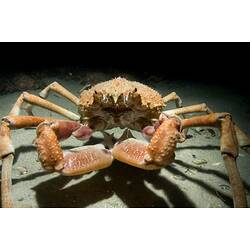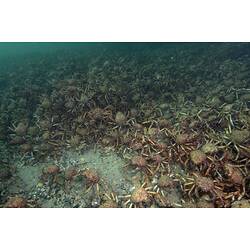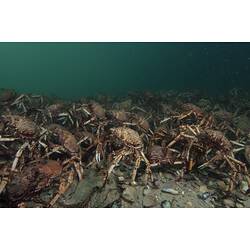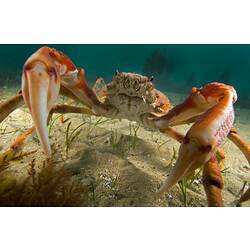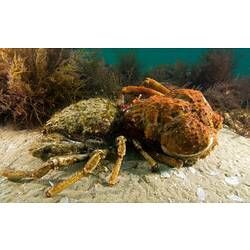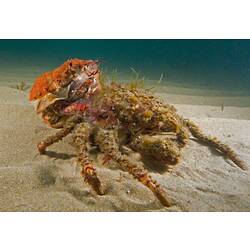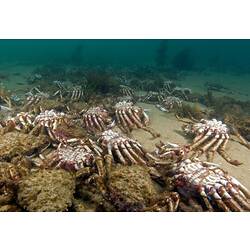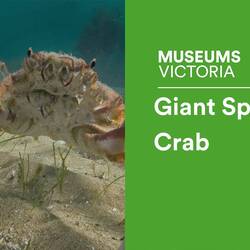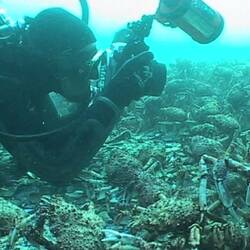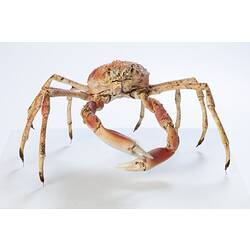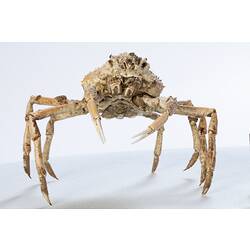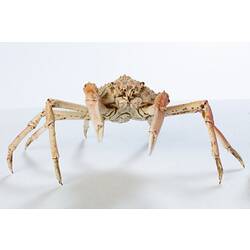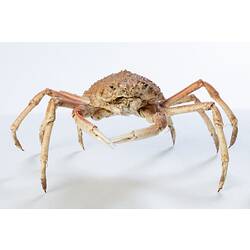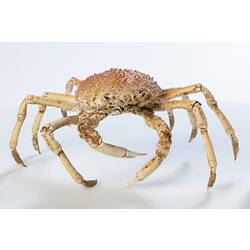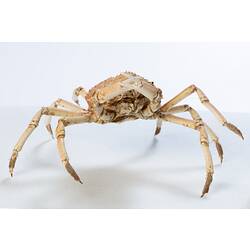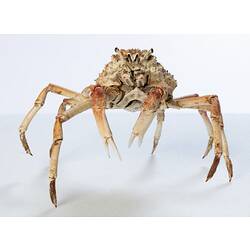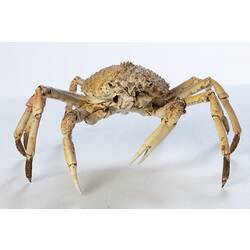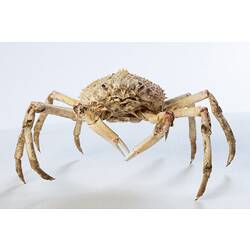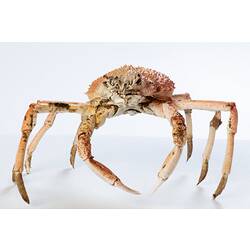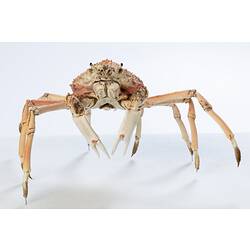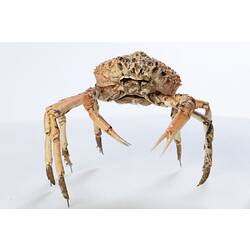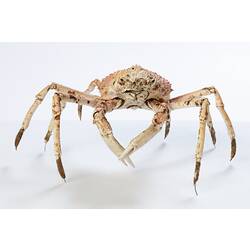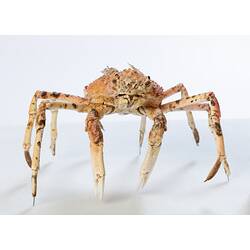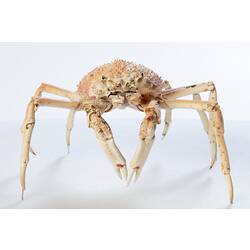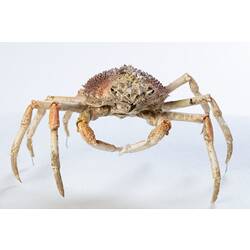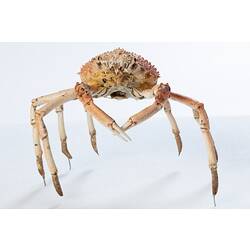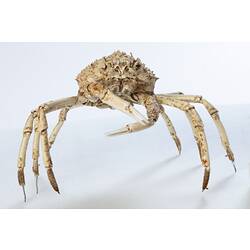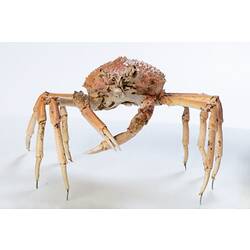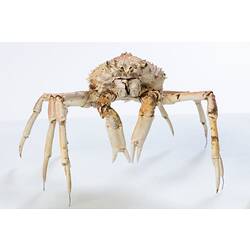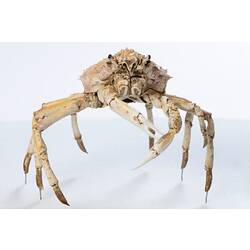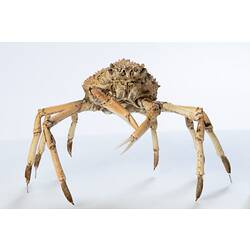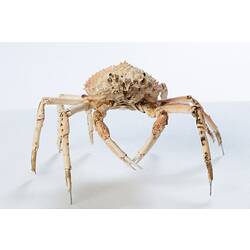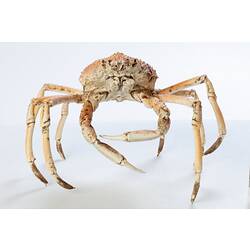General Description
Carapace rounded and red-brown. Seaweed and sponges sometimes attached to body. Up to 16 cm wide (carapace), leg span to 40 cm.
Biology
Giant Spider Crabs form large groups when breeding, often more than one hundred crabs to a group. They congregate before the winter moulting season when all of the crabs in the group moult at the same time. Moulting can take up to an hour. When the crab is freshly out of its old shell the new shell remains soft for a while making it a target for predators. Forming large groups at this time helps reduce an individual's chance of being eaten. A Giant Spider Crab's new shell is a bright orange which gradually fades. Giant Spider Crabs are scavengers and eat almost any food available to them.
Distribution
Southern Australia.
Habitat
Seaweed, reef and sand areas, to depth of 820 m.
More Information
-
Animal Type
-
Animal SubType
-
Brief Id
Carapace round, seaweed attached to body.
-
Colours
Red, Brown
-
Maximum Size
16 cm
-
Habitats
-
Diet
Carnivore
-
Diet Categories
Animal matter
-
Hazards
Not harmful but a nip from large claws could be painful.
-
Endemicity
-
Commercial
No
-
Conservation Statuses
CITES: Not listed, FFG Threatened List: Not listed, EPBC Act 1999: Not listed, IUCN Red List: Not listed
-
Depths
Shallow (1-30 m), Deep ( > 30 m)
-
Water Column Locations
On or near seafloor
-
Taxon Name
-
Scientific Author
(Milne Edwards, 1834)
-
Common Name
Giant Spider Crab
-
Other Names
Great Spider Crab
-
Phylum
-
Subphylum
-
Superclass
-
Class
-
Subclass
-
Superorder
-
Order
-
Suborder
-
Infraorder
-
Family
-
Subfamily
-
Genus
-
Species Name
gaimardii

